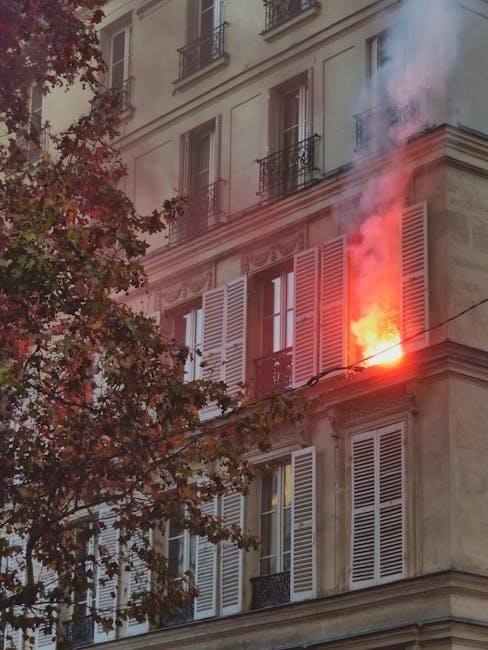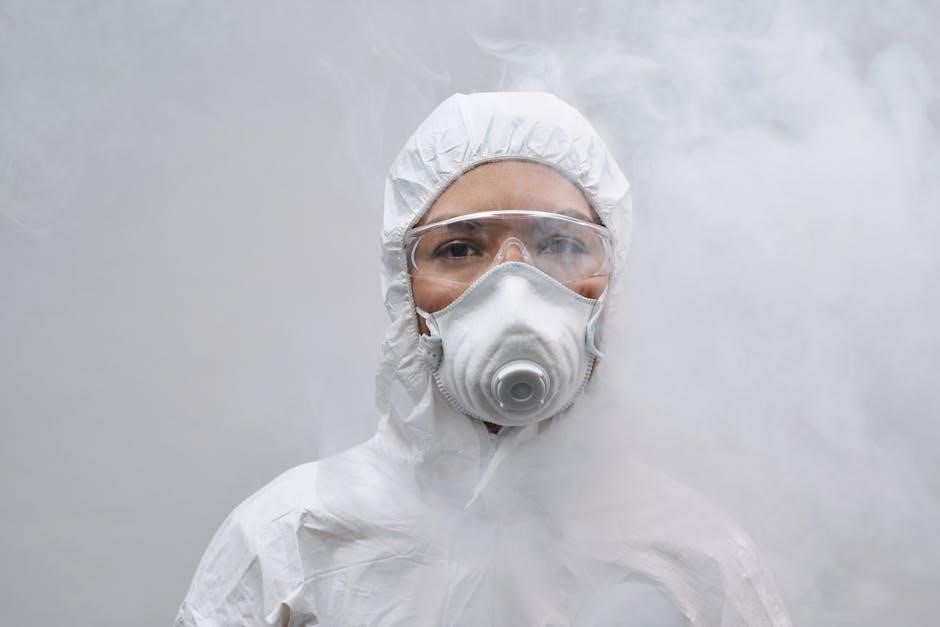Smoke Alarm Regulations in Victoria: A Comprehensive Guide
Navigating Victoria’s smoke alarm regulations can be complex. This comprehensive guide clarifies requirements derived from the Victorian Building Regulations 2018 and Residential Tenancies Regulations 2021. It highlights the importance of compliant smoke alarm systems and regular maintenance for creating safer living environments and avoiding legal complications for homeowners and rental providers alike.

Legal Framework: Victorian Building Regulations 2018 and Residential Tenancies Regulations 2021
The cornerstone of smoke alarm regulations in Victoria resides within two primary legislative instruments: the Victorian Building Regulations 2018 and the Residential Tenancies Regulations 2021. The Building Regulations 2018 mandate smoke alarm installation in accordance with the Building Code of Australia (BCA), ensuring all new residential buildings and renovations adhere to specific safety standards. This includes the placement and type of smoke alarms required for adequate fire detection.

Complementing this, the Residential Tenancies Regulations 2021 outlines the responsibilities of both rental providers (landlords) and renters regarding smoke alarms in rental properties. These regulations place duties on rental providers to ensure properties are fitted with working smoke alarms and that these alarms are maintained in good repair. Furthermore, the regulations address gas and electrical safety checks, emphasizing the importance of smoke alarms as urgent repairs, highlighting their vital role in tenant safety and legal compliance. This dual framework ensures comprehensive coverage of smoke alarm requirements across all residential properties in Victoria.
Australian Standard AS3786 Compliance
Adherence to Australian Standard AS3786 is a critical aspect of smoke alarm regulations in Victoria. This standard sets out the specific requirements for the design, performance, and testing of smoke alarms, ensuring they meet a minimum level of quality and reliability. Compliance with AS3786 is mandatory for all smoke alarms installed in Victorian residential properties, guaranteeing they can effectively detect smoke and provide timely alerts to occupants.
The standard covers various aspects of smoke alarm functionality, including sensitivity to smoke, alarm sound levels, and battery life. It also specifies requirements for the alarm’s construction and resistance to environmental factors. By requiring compliance with AS3786, Victorian regulations ensure that smoke alarms are not only present but also capable of performing their life-saving function effectively. This commitment to quality contributes significantly to enhancing fire safety in homes, units, flats, and townhouses across the state, safeguarding residents from the dangers of fire.

Smoke Alarm Placement: Requirements and Recommendations
Victorian regulations mandate specific smoke alarm placement to ensure optimal fire detection. Smoke alarms must be installed on or near the ceiling of every storey in residential buildings, including houses, units, flats, and townhouses. The placement should be between each sleeping area and the rest of the dwelling, maximizing the chance of early detection during nighttime hours when occupants are most vulnerable.
While regulations outline the minimum requirements, Victorian Fire Services strongly recommends installing additional smoke alarms for enhanced protection. They advise placing interconnected smoke alarms in every sleeping area, including bedrooms, and in living areas. Interconnected alarms ensure that if one alarm detects smoke, all alarms sound, providing a comprehensive and immediate warning throughout the entire property. This proactive approach significantly increases the likelihood of occupants escaping safely in the event of a fire, reinforcing the importance of exceeding the minimum regulatory standards for smoke alarm placement.
Landlord and Tenant Responsibilities
In Victoria, both landlords (rental providers) and tenants have specific responsibilities concerning smoke alarms. Landlords are legally obligated to ensure that the rental property is equipped with working smoke alarms that comply with Australian Standard AS3786. This includes installing alarms on every level of the property and ensuring they are in proper working order at the commencement of the tenancy.
Tenants are responsible for notifying the landlord of any issues with the smoke alarms, such as a malfunctioning alarm or a flat battery. While landlords are generally responsible for maintaining the alarms, tenants must not tamper with or disable them. Furthermore, smoke alarm maintenance is considered an urgent repair, so landlords must address any reported issues promptly. Regular gas and electrical safety checks are mandatory for landlords, emphasizing their overall responsibility for tenant safety. However, tenants are expected to play an active role in maintaining a safe living environment by reporting any concerns related to smoke alarms.
Types of Smoke Alarms: Mains Powered vs. Battery Operated
Victorian regulations permit two primary types of smoke alarms: mains powered and battery operated. Mains powered smoke alarms are connected to the building’s electrical system and typically have a battery backup in case of power outages. These alarms offer a reliable and consistent power source, ensuring they remain operational even during electrical failures. Battery operated smoke alarms, on the other hand, rely solely on batteries for power.
While earlier regulations allowed self-contained battery-operated alarms, current standards increasingly favor mains powered alarms, particularly in new constructions or significant renovations. However, standalone smoke alarms powered by 9V or 10-year lithium batteries may be acceptable in certain situations, especially where hardwiring is impractical or during minor upgrades. The choice between the two depends on the specific building regulations, the existing electrical infrastructure, and the desired level of reliability. Ultimately, both types must comply with Australian Standard AS3786 to ensure adequate fire safety protection.
10-Year Lithium Battery Smoke Alarms
In Victoria, a strong recommendation exists for utilizing smoke alarms powered by 10-year lithium batteries. These long-life batteries offer a significant advantage by eliminating the need for annual battery replacements, reducing the likelihood of alarms being disabled due to dead batteries. Victorian fire services, including the CFA and FRV, actively promote the adoption of these alarms to enhance fire safety across the state.
The primary benefit of a 10-year lithium battery smoke alarm lies in its extended lifespan, providing a decade of continuous protection without requiring manual battery changes. This feature is particularly beneficial for rental properties, where ensuring tenant compliance with battery replacement can be challenging. By installing these alarms, landlords can minimize the risk of non-functional smoke detectors and maintain a higher standard of safety for their tenants. While regular testing is still essential, the reduced maintenance associated with 10-year batteries makes them a practical and reliable choice for Victorian homes.
Regular Testing and Maintenance
While Victorian regulations mandate the presence of smoke alarms, regular testing and maintenance are crucial for ensuring their functionality and effectiveness. Although current legislation does not explicitly stipulate specific testing frequencies for rental providers, maintaining the premises, including smoke alarms, in good repair is a requirement. Best practice, supported by fire safety organizations like the CFA and FRV, strongly advises monthly testing of all smoke alarms.
Testing involves pressing the test button to confirm the alarm sounds. This simple action verifies the battery’s power and the alarm’s ability to detect smoke. In addition to testing, regular maintenance includes cleaning the alarm to remove dust and debris that can obstruct the sensor. If a smoke alarm emits a single, occasional beep, it indicates a low battery or a potential malfunction, requiring immediate attention. Replacing batteries annually (for alarms with replaceable batteries) or replacing the entire alarm unit when necessary is essential for continuous protection. Prioritizing these routines ensures alarms remain operational and reliable when needed most.
Smoke Alarms as Urgent Repairs
Victorian legislation recognizes the critical role of smoke alarms in safeguarding life and property by classifying smoke alarm issues as urgent repairs under the Residential Tenancies Act 1997. This classification underscores the immediate danger posed by malfunctioning or absent smoke alarms and necessitates prompt action to rectify any problems. Landlords are obligated to address smoke alarm issues without delay, as a non-functional smoke alarm significantly increases the risk of severe injury or death in the event of a fire.
Tenants are encouraged to report any smoke alarm malfunctions, including low battery warnings, chirping sounds, or complete failure, to their landlords immediately. Landlords must then arrange for repairs to be carried out as quickly as possible. This may involve replacing batteries, repairing faulty wiring, or installing new smoke alarms if necessary. Delaying repairs to smoke alarms is a serious breach of tenancy regulations and can have dire consequences. The “urgent repair” designation highlights the paramount importance of maintaining fully operational smoke alarms in all rental properties.
Penalties for Non-Compliance
Failure to comply with Victoria’s smoke alarm regulations can result in significant penalties for landlords and homeowners. The Victorian Building Authority (VBA) enforces these regulations, and non-compliance can lead to fines, legal action, and potential liability in the event of a fire-related incident. Landlords who fail to install or maintain working smoke alarms in rental properties face penalties under the Residential Tenancies Act 1997 and the Victorian Building Regulations 2018.
These penalties can include substantial fines for each violation, and repeated offenses may result in more severe legal consequences. Furthermore, if a fire occurs in a property without compliant smoke alarms, the property owner may be held liable for damages, injuries, or fatalities. This liability can extend to both civil and criminal charges, depending on the severity of the negligence; Ensuring full compliance with smoke alarm regulations is crucial for protecting lives, property, and avoiding potentially devastating legal and financial repercussions.
Heat Alarms in Garages

While smoke alarms are essential in living areas and bedrooms, specific regulations address fire safety in garages, particularly those located beneath residential dwellings. In Victoria, heat alarms are mandated in certain garage configurations to provide an additional layer of protection. Specifically, heat alarms must be installed in a Class 10a private garage that is situated beneath a Class 1a dwelling and not directly connected to that dwelling.
This requirement is outlined in NSW 1.1.4 and aims to address the unique fire hazards associated with garages, such as flammable liquids and vehicle-related fires. Heat alarms are designed to detect rapid temperature increases, providing an early warning of a fire in the garage, even if smoke is not immediately present. This is particularly important in garages located beneath living spaces, as it allows occupants to evacuate safely before the fire spreads to the dwelling above.
These alarms offer a crucial safety measure, protecting residents from potential garage fires.
